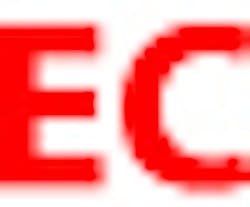Becoming a Truly International Organization
Regionalization. It has been a while since this topic-and process-has been discussed in this column (as far back as the September/October 2010 issue), and many of you-especially new IECA members-may not even be aware of the most significant restructuring of the organization since it was founded more than 40 years ago.
Almost 10 years after Australians Rick Morse and Doug Wimble initially proposed a major structural change, we finally are becoming truly international. And after a membership survey and subsequent approval several years ago, we are forming two regions in order to better serve our global membership. Although the majority of our membership is in the United States, which tends to drive our educational programming, we continue to expand our presence through chapters around the world.
Regions Explained
Region One includes North and South America and Europe. Region Two includes Oceania, Africa, and Asia. Within those regions reside the chapters. So, for example, what is now IECA headquarters in Denver, Colorado, will soon become the headquarters for Region One, since that is where our data is housed. Currently, Region One has 11 chapters. In Region Two, we currently have chapters in Australasia (headquarters for the new Region Two), India, Malaysia, and South Africa. This restructuring allows for change and growth, and for each region to have the latitude to run operations based on its own unique needs and cultures. But the structure will facilitate maintaining the common IECA mission, vision, expertise, and professionalism.
Both regions will be overseen by an advisory International Regional Council (IRC) made up of a total of seven representatives from both regions. The current plan is to meet virtually three times per year and once face-to-face at alternating regional conferences.
The IRC will oversee the entire association to ensure we are operating within the constitution and bylaws and will play an official role in all association business, functions, correspondence, etc. under the leadership of the chief of council (president) on behalf of the IRC. All officers of the IRC will be elected internally, the current protocol for Region One.
The IRC will eventually oversee the SOIL Fund Committee and oversee the layout and management of a common website home page. Officers initially will have staggered terms, with the goal of three-year terms for each representative.
Board Structure
Unlike Region One, the Region Two Board of Directors requires representation from all of its current chapters. Region One currently consists of eight members from the United States and one from IberoAmerica, all elected in a general election by members. Region Two had its inaugural meeting on March 30, 2012, electing officers as follows:
- President: Rick Morse (Australasia)-term: one year
- Administrative vice president: Doug Wimble (Australasia)-term: three years
- Technical vice president: Azman Abu Bakar (elected in his absence and to be confirmed-Malaysia)-term: two years
- International development vice president: C.R. Devaraj (India)-term: three years
- Marketing vice president: Lehman Lindeque (Southern Africa)-term: one year
- Secretary: Michael Frankcombe (Australasia)-term: one year
- Treasurer: Danny Ng (Malaysia)-term: two years
- Director: Dr. Anil-term: two years
- Director: Heinz Beckedahl-term three years
In addition, Region Two has appointed its three representatives to the IRC as follows:
- Rick Morse-term: one year
- Danny Ng-term: two years
- C.R. Devaraj-term: three years
Region One has nominated eight potential representatives. By the time this article is published, three officers will have been selected. At that point, the six members of the new IRC will select the chief of council; the remaining empty position will be filled with an officer appointed from that region.
Please contact the Denver office or myself [email protected] if you would like more details on this exciting development-a change whose aim is to make IECA more relevant and valuable to people everywhere.
